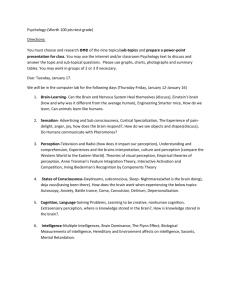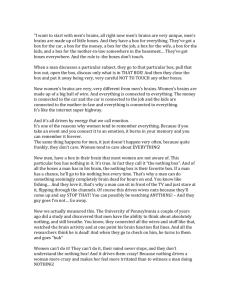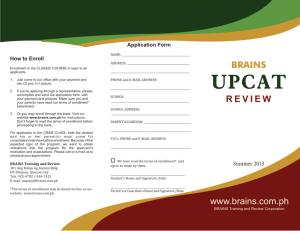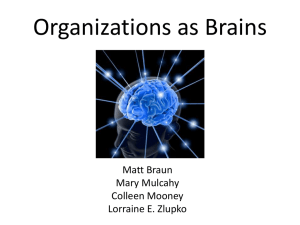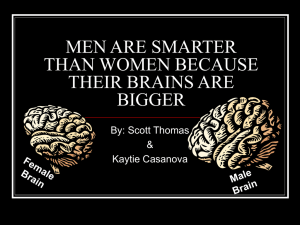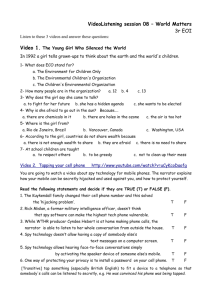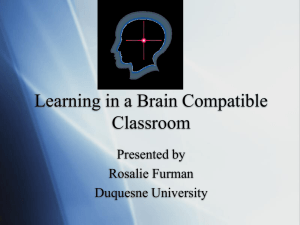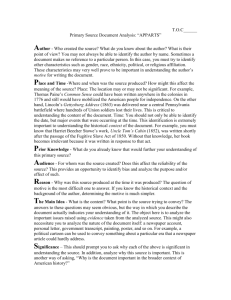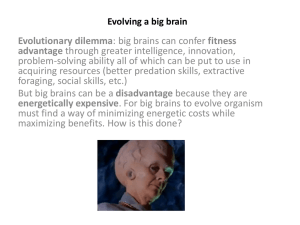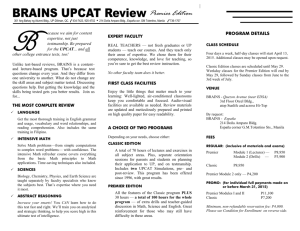Chapter 4 Organizations as Brains
advertisement
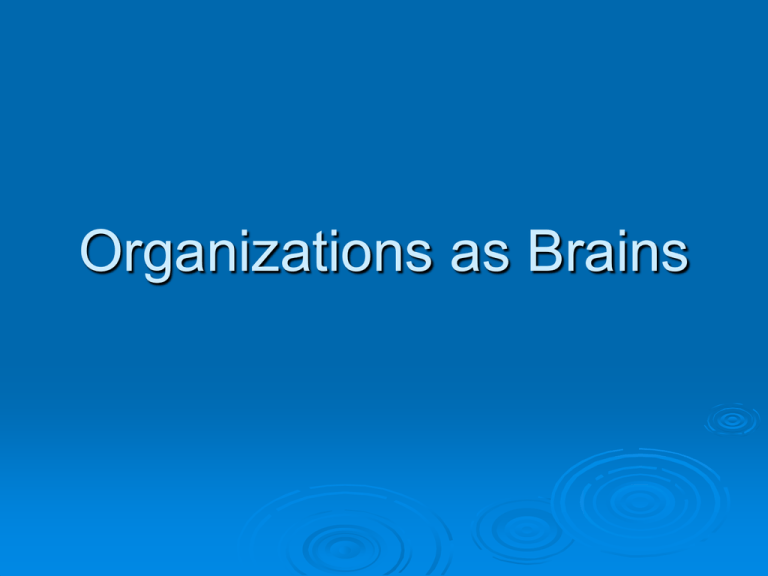
Organizations as Brains Brain as Learning Organization 1) Brains are “flexible, inventive and resilient….” p. 72. 2) Brains specialize (left/right) but also retain generalist capabilities (can make up for one function if another function fails) 3) Mobots show that centralizing brains is less effective than distributing brain functions. Brain Image “The brain as a system engages in an incredibly diverse set of parallel activities that make complementary and competing contributions to what eventually emerges as a coherent pattern.” 75. Three Metaphors within the Brain Metaphor There are various ways to view the brain. We will be talking about three: Brains as Information Processing Systems Brains as Cybernetics Brains as Holographs Brains as Information Processing Systems 1) Brains collect different kinds of information (rules, words, data, etc) and try to make sense of the information. a) brains as bounded rationality -1. Managers used the above idea to try to control uncertainty 2. March and Simon, however, argue that “left” and “right” brain should be integrated: intuition and rationality. Don’t control uncertainty, work with it (just-in-time) Brains as Cybernetics 1) Brains self regulate through “negative feedback” A) Assess the environment B) Match environment with norms C) Assess deviations from norms D) Use “negative feedback” to get back on course. Negative Feedback Single Loop versus Double Loop Working with Uncertainty: the Progressive Organization 1) See the environment as changing. 2) Consistently question operating norms “why do we do it this way?” 3) Allow new patters to emerge 4) Use double loop learning (TQM and ringi) Brains as Holographs A hologram is a type of image in which the whole is created in every one of the parts; the organization can self generate during times of chaos 1) Build the whole into the parts Corporate DNA: Everyone shares the same vision, values and goals. • Networked Intelligence – • Holographic Structure – • Holistic teams and Diversified Roles – 2) Redundancy 3) Requisite Variety 4) Minimum Specs 5) Learning to Learn Strengths and Weaknesses 1) Values people; diversity; uncertainty; intution 2) Managers May resist because they would have to give up power and be self-critical. If you were to apply the metaphor, which concepts would be critical to include?

